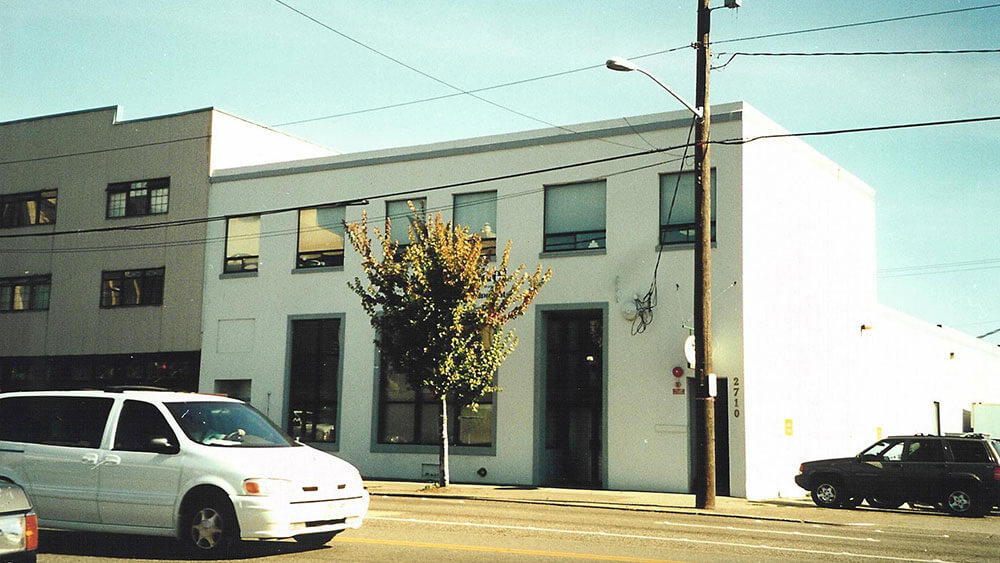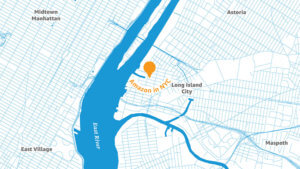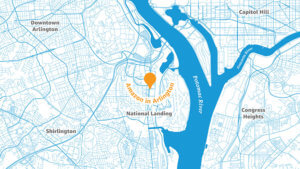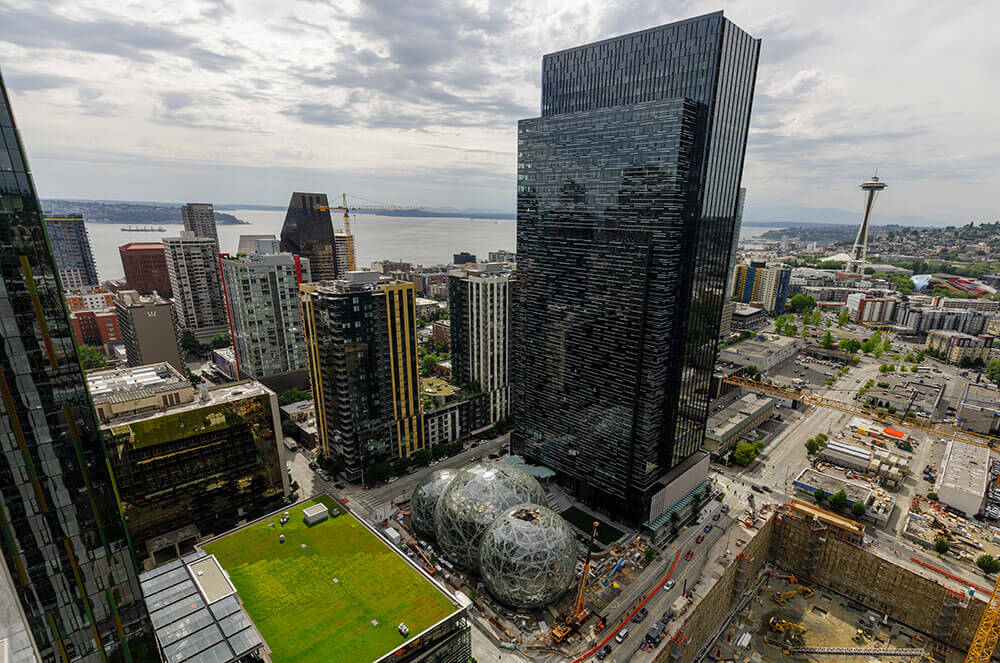
Amazon has come a long way since using its first office at 2710 First Avenue South in Seattle. The company recently selected New York City and Northern Virginia as sites for its second, and split, headquarters. (Amazon photo)
As the anticipation surrounding the location for Amazon’s HQ2 continued to build several months ago, Chris Fair, president and CEO of Resonance Consultancy, had a fairly accurate crystal ball for the corporate behemoth’s decision. New York City and Northern Virginia — the eventual winners of the split headquarters — emerged on his shortlist. Fair had analyzed a number of factors such as cultural community fit, quality of life, and recreational opportunities to make a well-educated guess at where Jeff Bezos would take his disruptive company.
Amazon’s announcement reinforced that Fair’s considerations played a crucial role in the decision-making process. Amazon cited Northern Virginia’s “abundant parks and open space with sports and cultural events for residents of all ages throughout the year” and credited Long Island City as “a diverse mixed-use community where arts and industry intersect.” While the criteria in the HQ2 quest was much larger in scope than what an organizer weighs for a three- or four-day conference, Fair told PCMA that the company’s RFP checklist offers a valuable lesson for event organizers: Evaluating a destination should entail more than flights per day, square footage of buildings, and other traditional elements.

Amazon headquarters in New York City will be located in the Long Island City neighborhood in Queens. (Amazon map)
“The RFP was not just focused on what we think of as the hardware of the city,” Fair said. “The hardware refers to components of the built environment such as the airport or the number of universities. Amazon was equally focused on the software of the city. Software speaks to the experiential quality of the city — the arts, culture, and all the things that make a city lovable.”
As organizers of citywide events compare potential sites for their groups, finding a “lovable city” also means matching a destination with the culture of an organization. Gregg Talley, CAE, FASAE, president and CEO of Talley Management Group, believes that Amazon’s search for a new headquarters shares similarities with what he calls “mission-based or outcome-based site selection” for meetings and events.
“Amazon’s list went way beyond the nuts and bolts of infrastructure,” Talley said. “They were focused on the type of community that the company wanted to create. Meeting and event organizers can apply a similar lesson in thinking about what they want to accomplish with their event.”
Talley gave the example of a literacy group saying to all the cities in its consideration set, “ ‘We can logistically create our experience in any of your destinations, but what we want to know is how you can each align with our mission,’ ” he said. “That changes the conversation and elevates it to a much more strategic level.”
As the events industry evolves, Talley thinks that all organizers should be aiming to reach that strategic level and shift the focus from hotel room nights to a big-picture impact. “We’ve got to be looking at a different measurement to judge an event’s value,” Talley said. “Whether that includes legacy or knowledge exchange, we need to focus on telling a bigger story.”
The Impact of Incentives
Of course, the financial incentives offered by cities played a big role in Amazon’s decision. Amazon promised jobs, and cities promised big tax breaks. In New York, the company will be eligible for approximately $1.2 billion of tax credits and a $325-million development grant if it spurs an appropriate amount of job creation. Arlington, Virginia officials have guaranteed $573 million of tax credits, plus a cash grant of $23 million that is tied to the growth of hotel taxes.

Amazon headquarters in Northern Virginia will be located in the newly named National Landing area in Arlington County and the city of Alexandria. (Amazon map)
While the numbers for a permanent corporate headquarters are clearly on a bigger scale than the money tied to a convention, Talley said that the events industry should pay close attention to the pressures — and potential backlash — in the Amazon deal. “All too often, the numbers [of job creation and spending] haven’t been reached, and the public suffers,” Talley said. “There is a moral issue at hand.”
Plenty of Amazon’s critics have been outspoken about that. Consider TechCrunch Editor Jonathan Shieber’s perspective on the company’s ability to send cities across the country clamoring to offer the company massive tax breaks. “In its search for a new office location or two, Amazon perverted the standard request-for-proposal process designed to provide transparency into how governments spend money on big projects,” Shieber wrote in “The Great Amazon Swindle.” “Either by design or happenstance, Amazon shat all over the process and the inherent transparency by which civic decisions are made.”
The meetings industry has a much lower profile than the company that’s shipping boxes via drones, buying grocery chains, and producing new television series. Ask the average resident if he or she understands the direct spending implications of the trade show happening in their downtown, and you’ll most likely get a shoulder shrug. However, Fair is curious to see whether organizers of major events take a cue from Amazon in creating bigger campaigns around competing for their business.
“I wonder if we’ll see a copycat syndrome that parallels Amazon’s efforts to generate publicity,” Fair said. “Amazon’s approach was effective, and they extracted some significant benefits. Will events take a more public approach on these wide-open casting calls? And will destinations take the bait — obviously not on the same scale — to draw events to places where they haven’t been before?”
For the events industry, Talley believes that potential issues are avoided by structuring a deal appropriately. “As long as incentives are tied to deliverables, it’s fair and square,” Talley said. “Every community gets to make a decision about what they’re willing to offer [to attract group business], and that offer should be tied to the actual performance. If an organizer books a room with the claim that the group will bring 10,000 attendees but only 5,000 come, then that incentive should go off the table.”
Talley added: “We have to be very careful that we are speaking the truth when we approach our partners, and tell them what we are able to produce.”
Interested in more lessons from Amazon? Check out “Using Amazon’s 4-Star Approach to Shape Your Education Offerings.”

Amazon’s main headquarters in downtown Seattle includes two spheres containing more than 40,000 plants that bring nature to the urban site. (Amazon photo)
